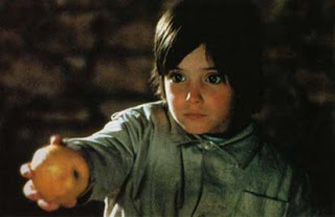|
|
Sole Criterion: The Spirit of the BeehiveBy Brett Ballard-BeachNovember 23, 2012
As isolated as they may be individually, Erice also frames their isolation from the town. They are not the only four characters, but they are about the only ones given any depth, dialogue and/or significant screen time. We see a good portion of the village assembling for the Frankenstein screening, and observe the girls in their classroom setting, and see a few tableaus of the townspeople going about their day, but very little else that sets them off in contrast. One can imagine similar stories and films being made about the other villagers. One of the most unsettling aspects of the film, ironically, comes from its golden/honey tones. Cinematographer Luis Cuadrado employs as great a use of the “magic hour” of sunlight as Nestor Almendros subsequently would in Terrence Malick’s 1978 feature Days of Heaven. There is abundant sunlight throughout the first half of the film but it all feels like it’s captured at just that moment when the sun is about to go down, the day is about to close, and it becomes both dizzying (to pinpoint exactly what time of day it is) and unnerving (a feeling of eternal sunshine). The second half features more post-sunset events (including an eerie sequence of Isabel and friends perilously leaping over a bonfire) and nighttime sequences (including when Ana runs away and the final moments of the film.) Cuadrado was in the early stages of blindness while filming Spirit of the Beehive and would take his life several years later.
|

|
|
|

|
Saturday, April 20, 2024
© 2024 Box Office Prophets, a division of One Of Us, Inc.


